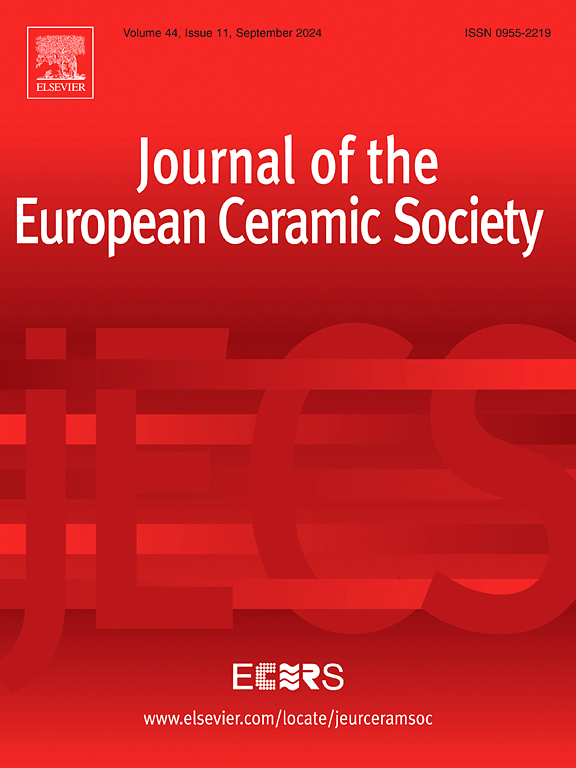Improving the mechanical performance of porous ice-templated bioactive scaffolds through the incorporation of additively manufactured reinforcement frames
IF 5.8
2区 材料科学
Q1 MATERIALS SCIENCE, CERAMICS
Journal of The European Ceramic Society
Pub Date : 2025-03-17
DOI:10.1016/j.jeurceramsoc.2025.117375
引用次数: 0
Abstract
The combination of ice-templating and 3D printing represents a promising strategy for the fabrication of robust bioactive scaffolds with multi-scale porosity. The ice-templated microconstituent provides a highly porous heterogeneous environment for cells, while the additively manufactured component serves to mechanically reinforce this porous substrate while occupying minimal space within the resulting composite. Different minimal surface reinforcement structures were obtained by DLP using highly loaded photosensitive suspensions of β-TCP and subsequently infiltrated with aqueous suspensions of the same material. The compressive strength of the reinforced structures improved over 500 %, compared to the ice-templated structures, with Weibull distribution central values of 12.2 ± 1.1 MPa and 2.2 ± 1.1 MPa, respectively. This was accompanied by a significant improvement in their reliability, roughly quintupling their Weibull modulus. Preliminary in vitro tests showed that none of the samples exhibited significant toxicity to MC3T3 cells after cultivation and cell anchorage was observed onto their surfaces.
通过掺入增材制造的增强框架来改善多孔冰模板生物活性支架的力学性能
冰模板和3D打印的结合代表了制造具有多尺度孔隙度的坚固生物活性支架的有前途的策略。冰模板化的微组分为细胞提供了一个高度多孔的非均匀环境,而增材制造的组分用于机械地加强这种多孔基板,同时在所得复合材料中占据最小的空间。利用高负载的β-TCP光敏悬浮液,通过DLP获得了不同的最小表面增强结构,随后用相同材料的水悬浮液浸润。与冰模板结构相比,加筋结构的抗压强度提高了500 %以上,威布尔分布中心值分别为12.2 ± 1.1 MPa和2.2 ± 1.1 MPa。这伴随着可靠性的显著提高,大约是威布尔模量的五倍。初步体外实验表明,培养后的样品对MC3T3细胞均无明显毒性,细胞在其表面有固定。
本文章由计算机程序翻译,如有差异,请以英文原文为准。
求助全文
约1分钟内获得全文
求助全文
来源期刊

Journal of The European Ceramic Society
工程技术-材料科学:硅酸盐
CiteScore
10.70
自引率
12.30%
发文量
863
审稿时长
35 days
期刊介绍:
The Journal of the European Ceramic Society publishes the results of original research and reviews relating to ceramic materials. Papers of either an experimental or theoretical character will be welcomed on a fully international basis. The emphasis is on novel generic science concerning the relationships between processing, microstructure and properties of polycrystalline ceramics consolidated at high temperature. Papers may relate to any of the conventional categories of ceramic: structural, functional, traditional or composite. The central objective is to sustain a high standard of research quality by means of appropriate reviewing procedures.
 求助内容:
求助内容: 应助结果提醒方式:
应助结果提醒方式:


